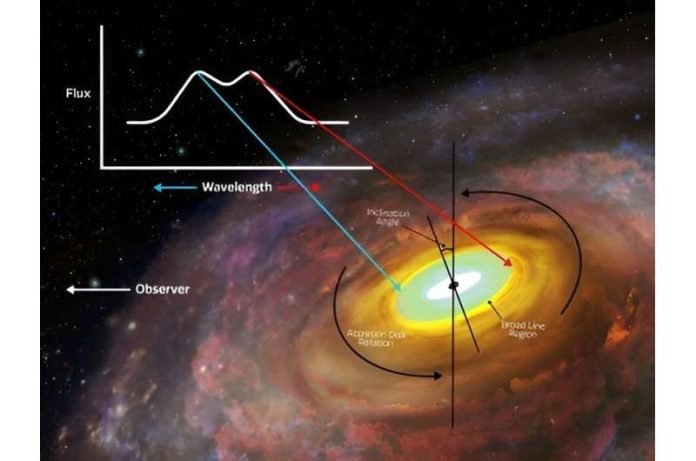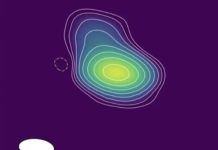
Astronomers have taken an unprecedented leap in understanding the mechanics of supermassive black holes and their accompanying accretion disks.
A recent study led by Denimara Dias dos Santos at the Instituto Nacional de Pesquisas Espaciais, Brazil, reports the first-ever detection of double-peaked profiles in near-infrared emission lines in an active galaxy, III Zw 002.
This groundbreaking research was conducted using the Gemini North telescope, part of the International Gemini Observatory.
What Are Accretion Disks and Emission Lines?
Accretion disks are disk-shaped masses of gas and dust that orbit supermassive black holes and feed them while emitting energy across the electromagnetic spectrum.
Emission lines appear in spectra when an atom transitions from an excited state to a lower energy state, emitting light.
These lines serve as atomic “fingerprints” that help astronomers analyze the structure and behavior of accretion disks, especially their broad line regions (BLRs).
The Significance of Double-Peaked Profiles
Usually, accretion disks are difficult to image directly due to their remote locations and relatively small sizes. However, astronomers have a useful indirect method.
They look for double-peaked emission line profiles, a specific pattern of broad emission lines. These profiles indicate the presence of an accretion disk and can provide information about its structure.
Observations and Findings
Previous studies had detected double-peaked profiles in the visible wavelength range, particularly in the H-alpha and H-beta lines.
The new research, however, has made the first unambiguous detections of double-peaked profiles in near-infrared.
Two emission lines were observed: the Paschen-alpha (hydrogen) line, which comes from the inner BLR, and the O I (neutral oxygen) line, which originates in the previously unobserved outer BLR.
The team used the Gemini Near-Infrared Spectrograph (GNIRS) to capture a clean, consistently calibrated spectrum, revealing these profiles.
According to Alberto Rodriguez-Ardila, a researcher involved in the study, this discovery not only confirms the presence of an accretion disk around the supermassive black hole of III Zw 002 but also advances our understanding of BLRs.
Model Predictions and Implications
The team compared their observations with existing disk models to extract specific parameters about the BLR and the supermassive black hole in III Zw 002.
These predictions suggest that the black hole has a mass between 400 and 900 million times that of our sun and that the BLR has an outer radius of 52.43 light-days.
Next Steps and Future Research
The team plans to continue monitoring III Zw 002 to observe how its accretion disk behaves over time. Their observations so far have been consistent with their model.
This research opens up new avenues for studying other active galactic nuclei (AGNs) using near-infrared detection.
Conclusion
This discovery, published in The Astrophysical Journal Letters, represents a significant step in our understanding of supermassive black holes and their accretion disks.
It provides valuable insights into the inner workings of active galaxies, paving the way for future research in this fascinating area of astrophysics.
The study was published in The Astrophysical Journal Letters.



